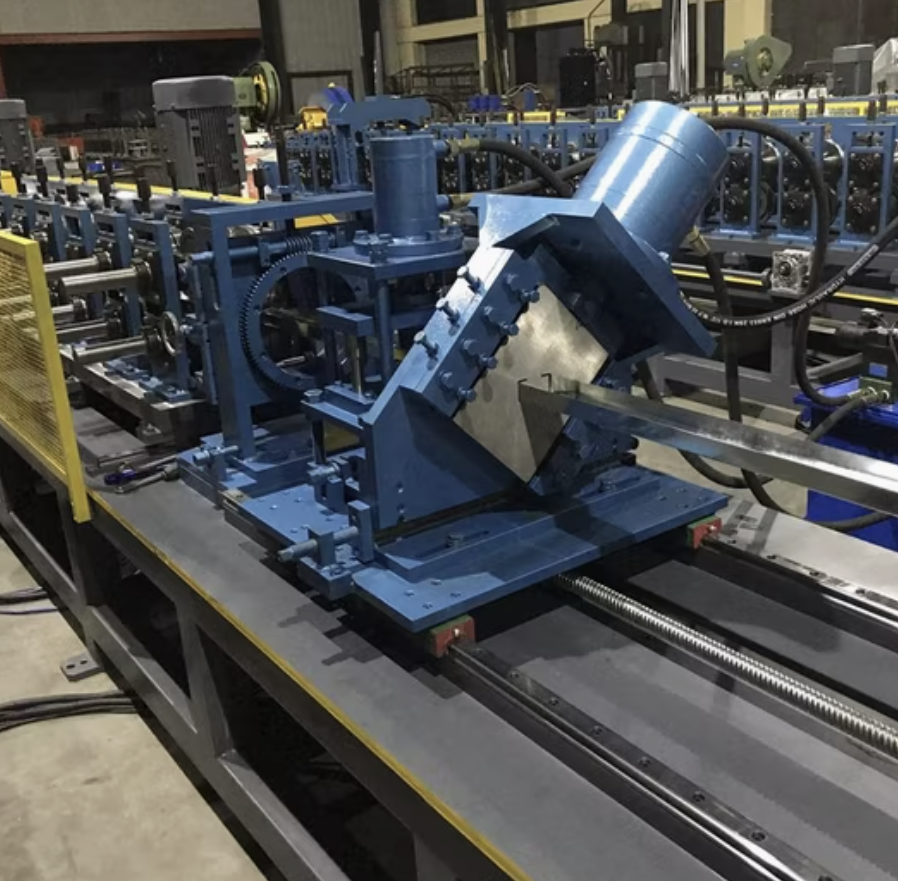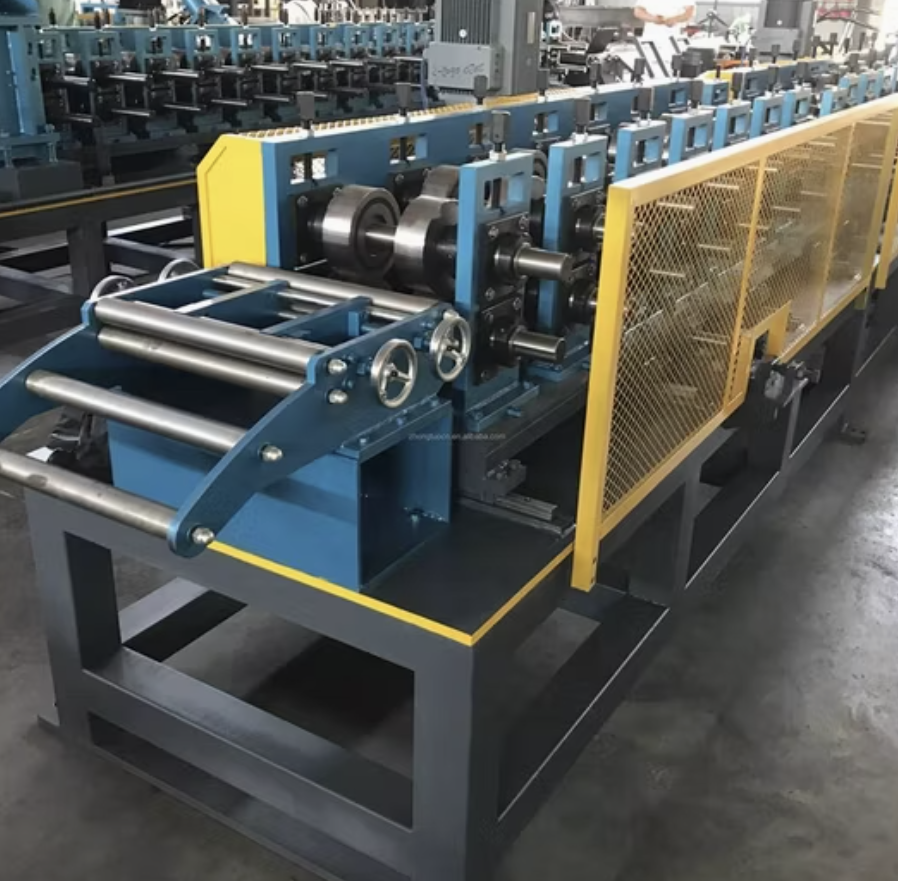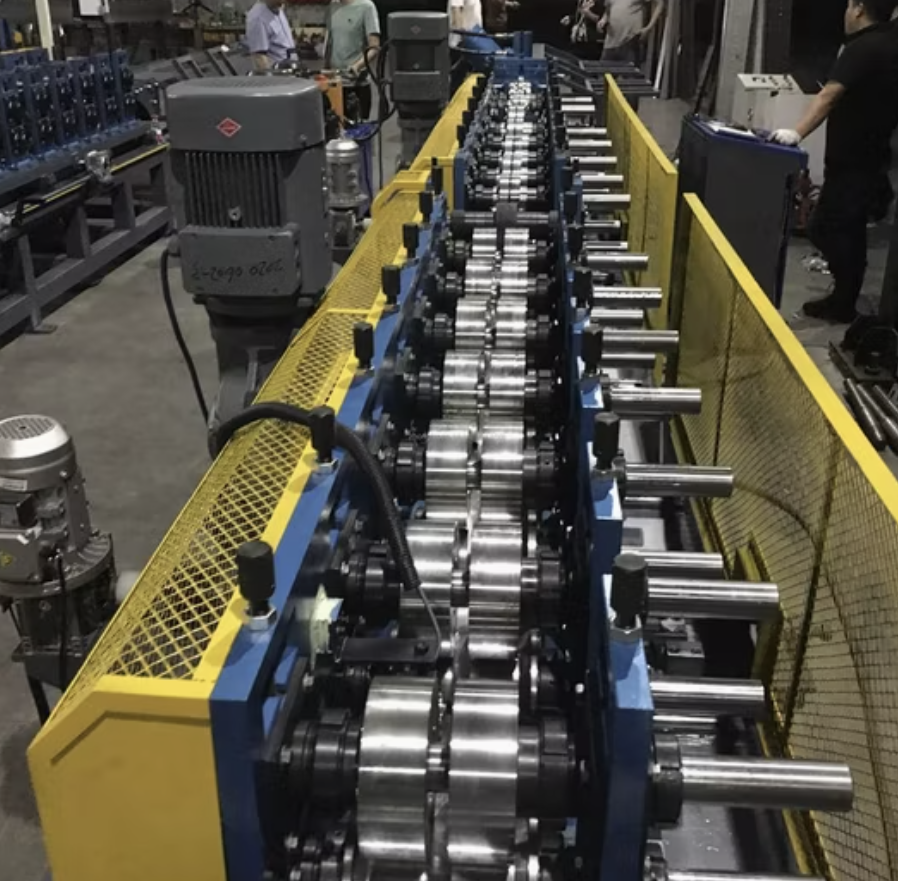To express an interest in this machine please submit the form below.

Not Sure What Machine You Need?
Select Your Profile, We'll Match It
Choose your desired profile drawing, and let Machine Matcher connect you with the best roll forming machine tailored to your needs.
Browse Profiles




Steel stud and track roll forming machines are specifically designed to produce metal studs and tracks used in drywall framing, light steel framing, and other structural applications. These machines take coiled steel, usually galvanized, and form it into precise, uniform studs and tracks through a series of high-precision rollers. Known for their efficiency and speed, these machines can produce high-quality studs and tracks that meet industry standards, making them ideal for construction projects of varying scales.
Steel stud and track roll forming machines can produce various sizes and shapes by adjusting the rollers and feeding system, allowing for flexible production suited to the specific demands of each project. With advanced technology, they offer enhanced accuracy, minimal material waste, and automation features that streamline the production process.
The setup and installation of a steel stud and track roll forming machine generally involve several steps:
Regular maintenance is essential to ensure the longevity and efficiency of the machine:
Q1: What materials can be used in a steel stud and track roll forming machine?
A1: While these machines are primarily designed for galvanized steel, they can also process other materials, such as aluminum and stainless steel, depending on the machine’s specifications.
Q2: Can I produce custom stud and track profiles with this machine?
A2: Yes, these machines are often customizable and adjustable to produce a range of standard and custom stud and track profiles by altering the roller settings.
Q3: What is the typical speed of a steel stud and track roll forming machine?
A3: Standard machines operate around 20-30 meters per minute, but high-speed models can go even faster.
Q4: Do I need a skilled operator for this machine?
A4: Yes, skilled operators are recommended, especially those familiar with roll forming processes and PLC systems. However, many machines come with user-friendly interfaces, reducing the training time.
Q5: What kind of maintenance is required?
A5: Maintenance includes regular cleaning, lubrication, inspection of rollers and electrical systems, and periodic calibration to ensure accurate profile production.
Q6: How does the punching system work in these machines?
A6: Punching systems, often hydraulic or servo-driven, create holes or slots as per the requirements, typically controlled by the machine's PLC.
Q7: Are there any safety features included with these machines?
A7: Yes, most machines come with enclosures, safety guards, and emergency stop functions to ensure operator safety.
Q8: Is it possible to monitor production remotely?
A8: Many modern machines include options for remote PLC systems, allowing operators to monitor and adjust settings from a distance.
Q9: Can the machine handle different gauges of metal?
A9: Yes, most machines are built to accommodate a range of thicknesses, generally from 0.4mm to 1.5mm, but it’s crucial to check each machine’s specifications.
Q10: How is the machine set up for different stud and track sizes?
A10: The roller positions and PLC settings can be adjusted according to the required profile size, and experienced operators or technicians can often handle these changes efficiently.
Copyright 2025 © Machine Matcher.